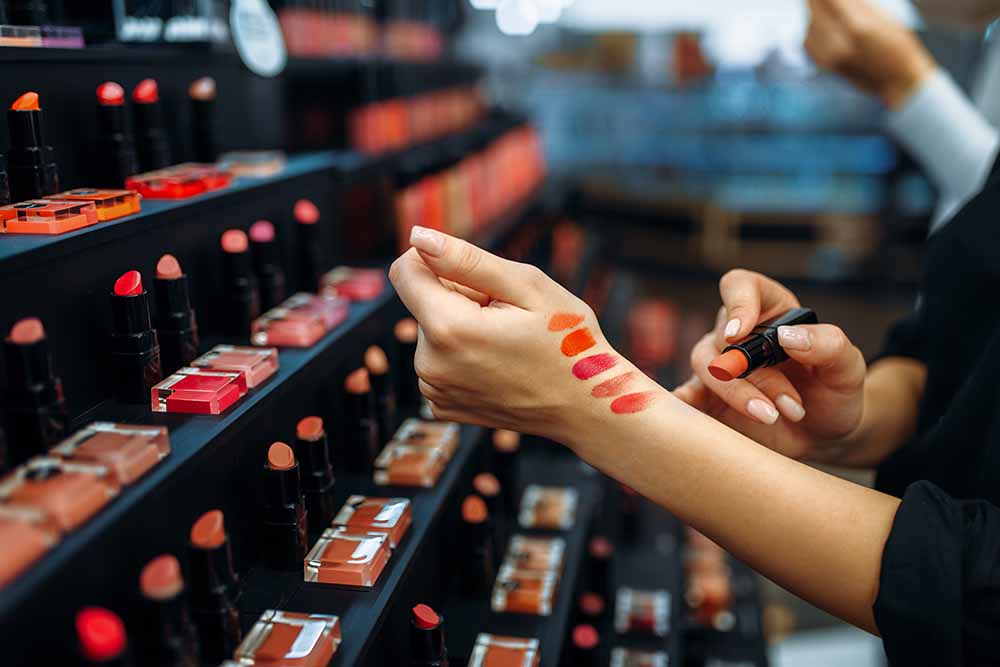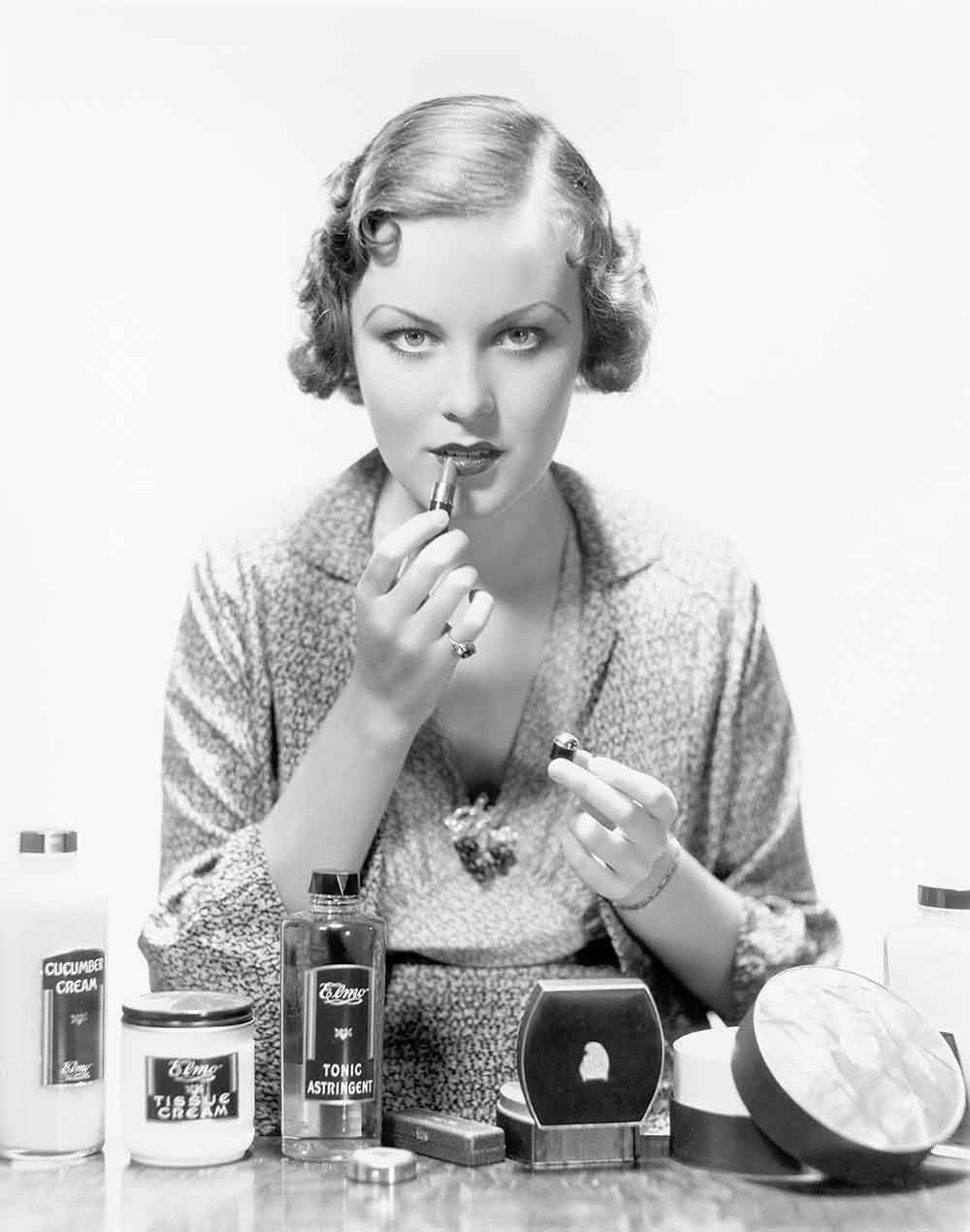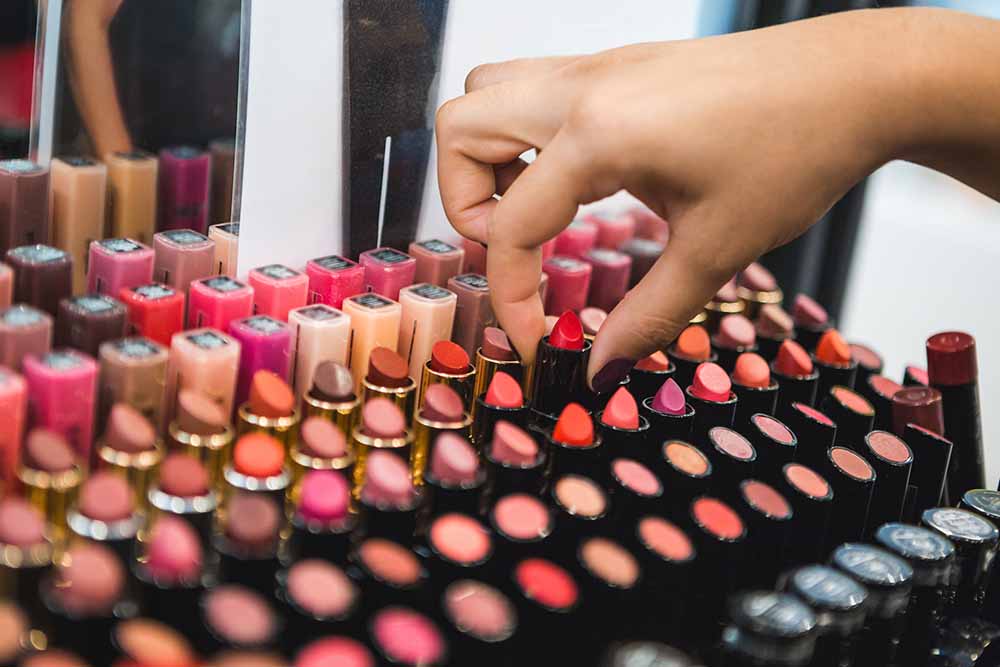In times of economic uncertainty, a curious phenomenon known as the "lipstick effect" emerges, suggesting that consumers gravitate towards purchasing small luxuries like lipstick during financial downturns. This intriguing trend has captured the attention of economists, psychologists, and beauty enthusiasts alike, prompting a deeper exploration of its origins and implications. But is the lipstick effect merely anecdotal, or does it hold true in the realm of economic theory? Let's delve into the complexities of this phenomenon to uncover the truth behind the lipstick effect.
What the Lipstick Effect Means:
The lipstick effect refers to the tendency of consumers to increase their purchases of affordable indulgences, such as lipstick, during periods of economic hardship. Despite facing financial constraints, individuals may still seek out small luxuries as a means of maintaining a sense of normalcy and boosting their mood.

Image used for representational purposes only.
The Birth of the Lipstick Effect:
During the Great Depression of 1929 and the 2008 banking crisis, an intriguing phenomenon emerged: despite economic downturns, the sale of lipsticks increased in the US. Amidst financial hardship, women opted for smaller luxury items like lipsticks to boost their spirits, rather than investing in larger purchases such as fur coats.

Image used for representational purposes only.
The term "lipstick effect" gained prominence during the recession of the early 2000s, as anecdotal evidence suggested a surge in lipstick sales despite a downturn in overall consumer spending. This phenomenon captured the attention of economists and psychologists, sparking a debate over its underlying causes and implications. The trend was evident during the 2008 crisis, with cosmetic companies like L'Oreal experiencing significant sales growth despite the economic turmoil.
Estée Lauder, the founder of the eponymous cosmetics company, made significant contributions to the theory underlying the ‘lipstick effect.’ By promoting lipstick and other beauty products as affordable luxuries that could uplift spirits and enhance confidence, Lauder effectively tapped into the concept of the ‘lipstick effect.’
Psychological Explanations:
Psychologists propose several theories to explain the lipstick effect from a psychological standpoint. One theory suggests that during times of economic uncertainty, individuals seek out small indulgences as a form of self-care and stress relief. Purchasing lipstick, a relatively inexpensive luxury, can provide a temporary boost to mood and self-esteem, offering a sense of comfort amidst financial turmoil.
Economic Perspectives:
From an economic standpoint, the lipstick effect aligns with the income effect theory, which posits that as disposable income decreases during economic downturns, consumers shift their spending towards cheaper goods that provide immediate gratification. Lipstick, with its relatively low price point compared to larger luxury items, becomes an attractive option for consumers looking to indulge without breaking the bank. On the other hand, cosmetics have proved to be a growing category in terms of consumerism for many decades now.

Image used for representational purposes only.
The Statistics
While the lipstick effect has garnered attention and speculation, its validity remains a subject of debate among economists and researchers. Most studies support the existence of the lipstick effect, citing empirical evidence of increased sales of beauty products during economic downturns. However, other research suggests that the lipstick effect may be overstated or influenced by various factors such as marketing strategies and cultural norms.
According to a study published in the Journal of Personality and Social Psychology, researchers found evidence supporting the lipstick effect phenomenon, noting an increase in beauty product sales during periods of economic recession.
Similarly, a report by market research firm Mintel revealed that during the global financial crisis of 2008, sales of affordable beauty products, including lipstick, experienced a notable uptick as consumers sought out small indulgences amidst economic uncertainty.
As more recently reported by the Business of Fashion in October 2022, the Lipstick Effect may not be a completely foolproof theory. In the US, sales of face care items dropped by 2.1 per cent in the previous year, despite inflation driving up sales in dollar terms. European consumers were also seen cutting back on makeup and skincare spending. As a result, cosmetic companies like L'Oréal felt the impact, with their luxury divisions experiencing slower growth compared to mass-market products. However, diversified companies with products at different price points are better positioned to weather the storm. For example, while L'Oréal's luxury division is facing challenges, its mass-market brands like Maybelline performed well. Conversely, less diversified companies like Olaplex and La Prairie struggled, with sales and growth projections downgraded. This highlights the importance of diversification in navigating economic uncertainties within the beauty industry.
That said, data from Circana revealed that lip makeup was the fastest-growing segment in the US makeup market in the first half of 2023, with lipstick sales specifically growing by 14 per cent during this period. Retailers like Ulta Beauty witnessed significant growth in the lip category, driven by consumer demand for both multitasking formulas and classic lipsticks. Additionally, platforms like TikTok contributed to the resurgence of consumer favourites like MAC Cosmetics’ Ruby Woo and Clinique’s Black Honey.
Is the ‘Lipstick Effect’ Sexist?

Image used for representational purposes only.
While the concept of the lipstick effect has been widely discussed in economics and consumer behaviour research, some critiques suggest that certain aspects of this phenomenon and related studies may perpetuate sexist stereotypes or overlook broader societal dynamics. The term "lipstick effect" itself implies a gendered association with women and cosmetics, reinforcing stereotypes about women's spending habits and interests. This narrow framing overlooks the diversity of consumer behaviour across genders and fails to account for the varied reasons individuals may purchase beauty products.
Studies focusing solely on lipstick sales during economic downturns may inadvertently reinforce traditional gender roles by associating women with frivolous spending on cosmetics as a coping mechanism. This overlooks the complex economic decisions individuals of all genders make during times of financial hardship.
Overlooking Structural Inequities: The focus on consumer behaviour in relation to lipstick sales during economic downturns may divert attention from larger structural issues contributing to economic inequality, such as wage disparities, lack of affordable healthcare, and limited access to education and employment opportunities. By focusing narrowly on consumer choices, these studies may overlook systemic factors that perpetuate economic insecurity for marginalised communities.
Many studies on the lipstick effect fail to consider how factors such as race, class, sexuality, and disability intersect with gender to shape individuals' experiences and economic behaviours. Failing to account for intersectional identities can lead to oversimplified conclusions and perpetuate inequalities.
While the lipstick effect and related studies provide insights into consumer behaviour, it's essential to examine their underlying assumptions and implications critically. By adopting a more inclusive and intersectional approach to research, we can better understand the complex dynamics of consumerism and challenge sexist stereotypes in both academia and society.